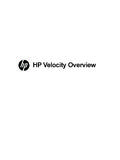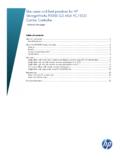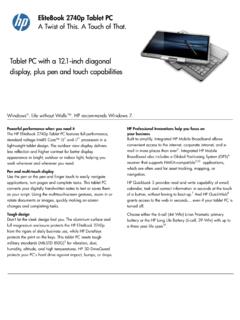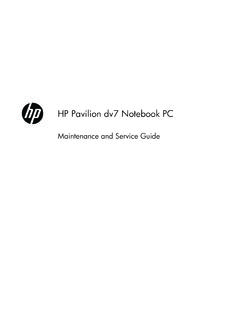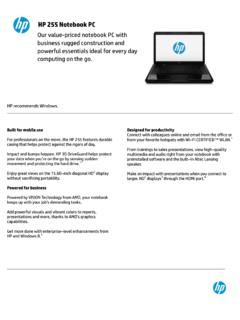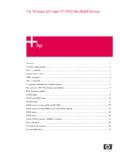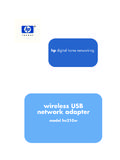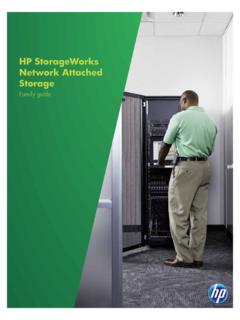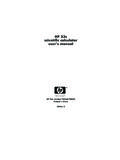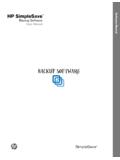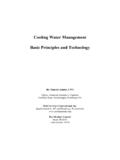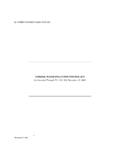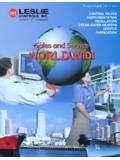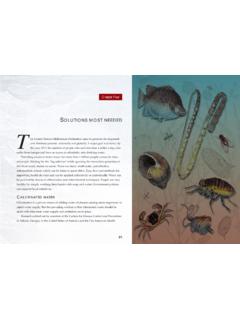Transcription of Technical white paper HP PageWide Technology
1 Technical white paper HP PageWide Technology Breakthrough speed, professional quality Table of contents 4 Breakthrough speed, professional quality 5 How HP PageWide Technology achieves breakthrough speed 5 How ink printing works 5 HP inks a recipe for quality 6 Moving the ink from printhead to paper 7 Building a PageWide printhead 7 HP Scalable Printing Technology 7 A PageWide printhead 8 Managing 42,240 nozzles 9 Nozzle substitution 10 Printhead servicing 11 Ink and paper , working together 11 HP pigment inks 11 Papers with ColorLok Technology 12 Moving the paper 14 Achieving high print speeds and fast first page out 14 Conserve resources save energy and money 14 Summary Technical white paper | HP PageWide Technology 3 Business moves fast.
2 Professional impressions are paramount. Exceptional office printing helps set the pace, pushes projects forward, makes workteams more efficient, and improves the bottom line. Technical white paper | HP PageWide Technology 4 Breakthrough speed, professional quality Using breakthrough HP PageWide Technology , HP Officejet Pro X Series desktop printers and MFPs deliver up to twice the speed1 at up to half the printing cost compared with color laser This new class of devices offer the best of both ink and toner technologies, including: Fast printing speed, up to 70 pages per minute in General Office quality mode Powerful savings up to 50% lower cost per page than color laser printers2 No-compromise print quality , reliability, and energy savings Compatibility with corporate enterprise networks for management and workflow solutions3 Original HP pigment inks deliver superb output quality and resist smearing on a broad range of papers.
3 Plus, offices save money through low acquisition and operating costs and can save additional money and resources with an ENERGY STAR qualified device. 1 Comparison based on manufacturers published specifications of fastest available color mode (as of March 2012) and includes color laser MFPs <$1000 USD MSRP and color laser printers <$800 USD MSRP available March 2012 based on market share as reported by IDC as of Q1 2012 and HP internal testing of printer in fastest available color mode (sample 4-page category documents tested from ISO 24734). For more information, see 2 Cost per page (CPP) claim is based on the majority of color laser MFPs <$1000 USD MSRP and color laser printers <$800 USD MSRP as of March 2012, ISO yield based on continuous printing in default mode based on market share as reported by IDC as of Q1 2012.
4 CPP comparisons for laser supplies are based on published specifications of the manufacturers highest capacity cartridges. CPP based on HP 970XL/971XL ink cartridges estimated street price. For more information, see 3 Supports HP PCL 6, HP PCL 5c, HP postscript level 3 emulation, native PDF printing (v ), HP Universal Print Driver, HP Web Jetadmin, HP Imaging and Printing Security Center. Additional workflow solutions available through HP s certified software and third-party partner program. For solution details, go to Technical white paper | HP PageWide Technology 5 How HP PageWide Technology achieves breakthrough speed HP PageWide Technology takes proven, advanced commercial printing technologies and scales them to a new class of multifunction printers designed to serve small workteams.
5 More than 40 thousand tiny nozzles on a stationary printhead that spans the width of a page deliver four colors of Original HP pigment ink onto a moving sheet of paper . Because the paper moves and the printhead doesn t, HP Officejet Pro X Series printers are quiet and dependable offering laser-fast print speeds and a rapid first page out. The HP Officejet Pro X Series comes standard with built-in duplex printing capability, two input trays, and copy, scan, and fax functionality on multifunction models. The key elements of the HP PageWide Technology platform producing high print quality , speed, and reliability include.
6 A PageWide array of 42,240 nozzles that produce ink drops with uniform drop weight, speed, and trajectory 1,200 nozzles-per-inch native resolution for consistently high print quality HP Pigment Inks that provide controlled ink- paper interactions, high color saturation, dark, sharp, and crisp text, and rapid drying Precise control of paper motion for dependable print quality and reliable operation Automatic nozzle health sensing, active and passive nozzle substitution, and automatic printhead servicing for dependable print quality How ink printing works The basic elements of ink-based digital printing are colorants, the process for transferring colorant to the paper , and office papers.
7 HP inks a recipe for quality Colorants form the image on paper by reflecting light at specific wavelengths to produce distinct colors. Colorants can be made of dyes, pigments, or a mixture of both. Dyes are composed of individual molecules, whereas pigments are tiny colored particles whose diameter is about a wavelength of visible light. Both can produce bright, colorful images. However, pigments offer superior color saturation, black density, fade resistance, and smear resistance (for example, from water and highlighters) on office papers and coated brochure papers. These attributes make pigments the colorant of choice for HP LaserJet toners and for the HP inks used in HP Officejet Pro X Series printers.
8 In order to produce colorful graphics and images along with sharp, crisp lines and text, the colorant must remain at or very near the paper surface. If colorant moves across the surface or penetrates too deeply into the sheet, then lines and text won t be sharp, blacks won t be dark, and colors won t be vivid. To achieve high print quality , colorants must rapidly immobilize in a thin surface layer immediately after they reach the paper a primary factor in the high quality produced by HP LaserJet printers and HP Officejet Pro X Series printers. Technical white paper | HP PageWide Technology 6 Moving the ink from printhead to paper Unlike HP LaserJet toners, which are dry powders, inks are liquids during storage and delivery to the paper , and they behave like liquids for a short time on the paper surface.
9 Inks are composed of colorants and a clear liquid, called the ink vehicle , that carries the colorants to the paper . The ink vehicle in HP pigment inks is primarily water, but it also contains ingredients required for consistent, reliable drop ejection and for controlling interactions between the ink and paper . Ink travels to the paper surface in tiny, 6 picoliter drops. There are one trillion (1,000,000,000,000) picoliters in a liter, and a gram of ink yields about 170 million 6 picoliter drops. The printhead ejects drops one at a time through individual nozzles, and each drop must emerge at a consistent weight, speed, and direction to place a correct-sized ink dot in the correct location.
10 Chamber Heater Orifice Pillars (Ink filter) An HP Thermal Inkjet printhead has no moving parts. Nothing moves except the ink itself. Inside the printhead, shown by the cutaway diagram in Figure 1, an electrical pulse lasting about a microsecond heats a tiny resistor in the drop generator a three-sided chamber with a refill channel and nozzle that is filled with ink. A thin layer of ink vaporizes to form a bubble that expands to propel a drop out of the nozzle at around 10 meters (33 feet) per second. The bubble acts like a tiny piston, rising out of the floor of the chamber to push ink through the nozzle overhead.
